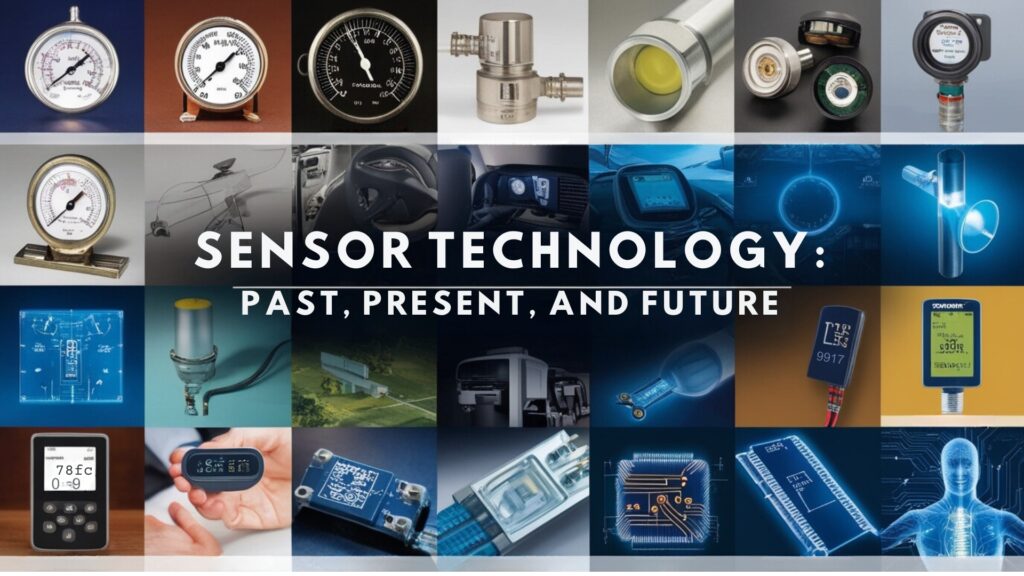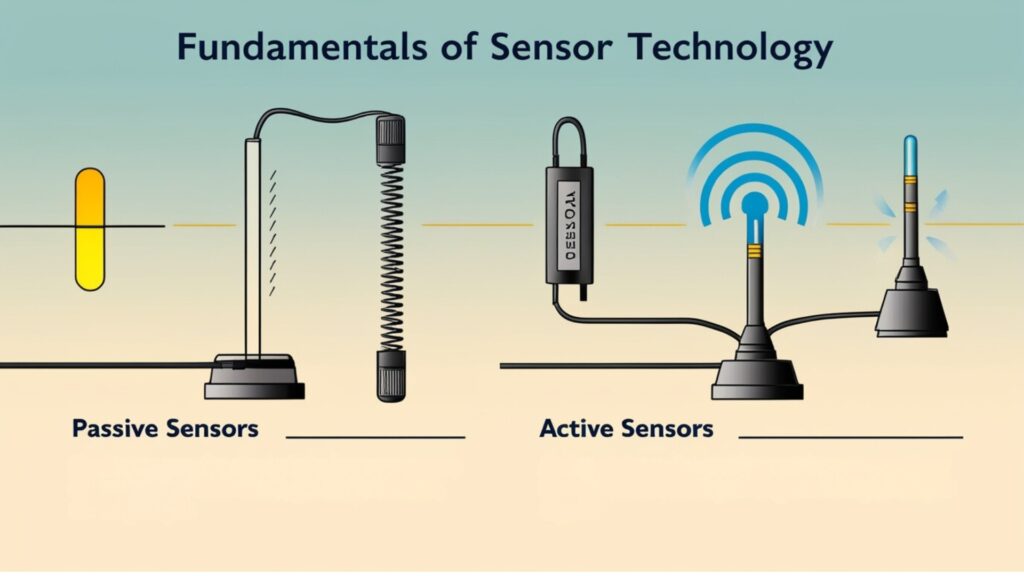Human Grasping Patterns
Grasping objects is something we do every day, whether it’s picking up a glass of water or holding a pencil. In the world of human grasping, there are six common grasp patterns:
- Cylindrical,
- Fingertip,
- Hook,
- Palmer,
- Spherical, and
- Lateral.
These grasps are chosen based on the task at hand, not the object’s shape or size. The human hand is a marvel of evolutionary engineering, capable of performing a wide range of complex tasks with remarkable precision and strength. At the core of this versatility lies our ability to grasp objects, a skill that has been crucial to our survival and technological advancement.
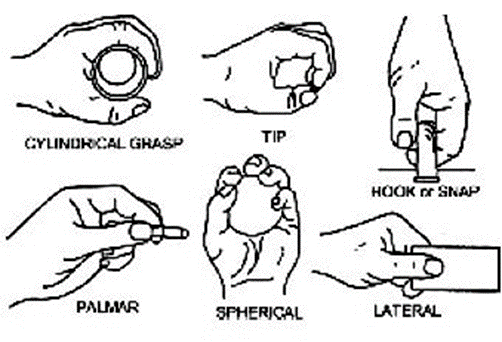
The Fundamentals of Grasping
Before we dive into the specific types of grasps, it’s essential to understand what grasping entails. Grasping is the act of seizing and holding an object using one’s hands. This seemingly simple action involves a complex interplay of muscles, tendons, and neural pathways, allowing us to manipulate objects with varying degrees of force and control.
There are six common grasping patterns in human grasp:
- Cylindrical: The hand forms a tube around the object, with the fingers and thumb closing around it.
- Fingertip: The fingertips make contact with the object while the rest of the hand remains open.
- Hook: The hand forms a hook shape, with the fingers curled and the thumb extended.
- Palmer: The hand is closed, with the palm making contact with the object.
- Spherical: The hand forms a sphere around the object, with the fingers and thumb closing around it.
- Lateral: The hand grasps the object from the side, with the fingers and thumb closing around it.
These grasp patterns are chosen based on the task at hand, not the object’s shape or size. For example, a cylindrical grasp may be used to hold a pen or a baseball bat, while a lateral grasp may be used to hold a book or a smartphone.
Key Components of Grasping:
- Hand anatomy
- Neural control
- Sensory feedback
- Motor coordination
Types of Robot Grippers
There are several types of robot grippers available, including the following:
- Hydraulic Grippers: use hydraulic fluid to generate force
- Pneumatic Grippers: use compressed air to generate force
- Electric Grippers: use electric motors to generate force
- Soft Grippers: use soft, flexible materials to gently grasp delicate objects
Understanding the Two Types of Grasp
Did you know that there are two primary ways we grasp objects? In this blog post, we’ll explore the two main types of grasping: Precision Grasp and Power Grasp, and how they differ in function and use.
Precision Grasp vs. Power Grasp
Let’s dive into the details of these two types of grasping.
Precision Grasp
Precision grasp, also known as pinch grip, is characterized by the use of the fingertips to hold and manipulate small objects with high accuracy and control. Precision grasp is all about delicacy and sensitivity. When you use precision grasp, you’re holding an object with the tips of your fingers and thumb. This allows for fine, controlled movements and is ideal for tasks that require finesse, like writing with a pen or picking up small objects.
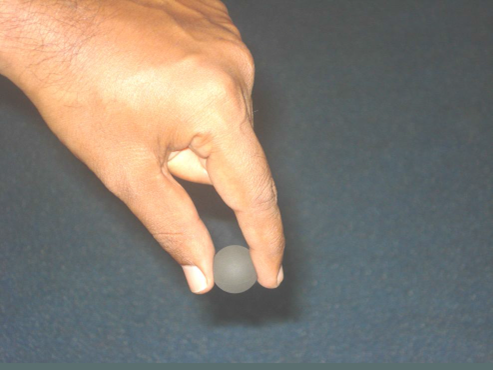
Here are some examples of precision grasp in daily life:
- Writing with a pen
- Holding a toothpick
- Playing a musical instrument
- Using tweezers to pick up small objects
Here are some examples of precision grasp in robotics:
- Medical robots performing precise surgeries
- Robotic arms used in electronics assembly
- Robotic hands used in pick-and-place operations
- Robotic inspectors used in quality control
Characteristics of Precision Grasp:
- Involves the thumb and one or more fingers
- Utilizes the distal phalanges (fingertips)
- Requires fine motor control
- Typically involves less force than power grasp
Types of Precision Grasps:
- Tip-to-tip pinch: Using the pad of the thumb against the pad of the index finger
- Lateral pinch: Using the pad of the thumb against the side of the index finger
- Tripod pinch: Using the thumb, index, and middle fingers
- Quadrupod pinch: Using the thumb, index, middle, and ring fingers
Applications of Precision Grasp:
- Writing and drawing
- Picking up small objects (e.g., pins, buttons)
- Surgical procedures
- Fine assembly work in manufacturing
- Playing musical instruments
According to a study published in the Journal of Hand Therapy, precision grasps account for approximately 20% of all grasping actions in daily activities.
Power Grasp
In contrast, power grasp is all about strength and stability. Power grasp, also referred to as cylindrical grasp or force grip, involves using the entire hand to hold and manipulate larger objects with greater force. When you use power grasp, you’re making multiple contact points between your fingers, palm, and the object. This type of grasp provides a large area of contact, making it great for tasks that involve heavy objects or when you need a firm, secure hold.
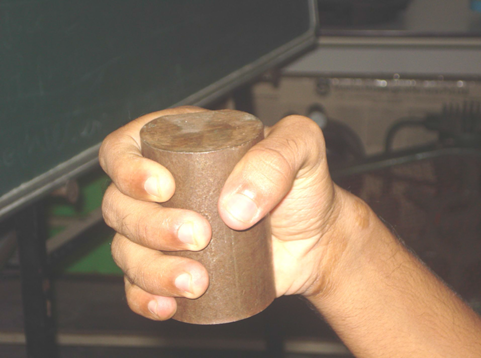
Here are some examples of power grasp in daily life:
- Holding a heavy book
- Carrying a grocery bag
- Grasping a hammer
- Lifting a weight
Here are some examples of power grasp in robotics:
- Industrial robots lifting and moving heavy parts
- Robotic arms used in construction
- Robotic vacuum cleaners picking up debris
- Agricultural robots harvesting crops
Characteristics of Power Grasp:
- Involves all fingers and the palm
- Utilizes the entire length of the fingers and thumb
- Requires gross motor control
- Generates significantly more force than precision grasp
Types of Power Grasps:
- Cylindrical grasp: Wrapping the hand around a cylindrical object
- Spherical grasp: Holding a spherical object with fingers spread
- Hook grasp: Using the fingers as a hook to carry or pull objects
- Lumbrical grasp: Holding flat objects against the palm with flexed fingers
Applications of Power Grasp:
- Lifting and carrying heavy objects
- Using tools (e.g., hammers, screwdrivers)
- Opening jars and bottles
- Sports activities (e.g., gripping a tennis racket, baseball bat)
- Climbing and hanging
Research from the American Society of Hand Therapists indicates that power grasps are used in approximately 70% of daily grasping activities.
The Interplay Between Precision and Power Grasps
While we often categorize grasps as either precision or power, many real-world tasks require a combination of both. This interplay is crucial for performing complex manual tasks efficiently.
Examples of Combined Grasping:
- Using scissors: Power grasp for stability, precision grasp for control
- Tying shoelaces: Alternating between precision and power grasps
- Playing guitar: Power grasp on the neck, precision grasp for fingerpicking
Factors Influencing Grasping Ability
Several factors can affect an individual’s grasping capabilities:
- Age: Grasping strength and precision typically peak in early adulthood and decline with age
- Hand size and shape: Influences the types of objects that can be grasped comfortably
- Neurological conditions: Disorders like Parkinson’s disease can impact fine motor control
- Injuries: Trauma to the hand or wrist can limit grasping ability
- Occupation: Certain professions may lead to enhanced grasping skills in specific areas
A study in the Journal of Biomechanics found that hand anthropometry (size and shape) can significantly affect grasping performance, with implications for tool and product design
When to Use Each types of Grasping
Knowing when to use precision grasp or power grasp is essential. Here’s a simple rule: precision grasping is for easy tasks that need dexterity, while power grasping is for hard tasks that require strength.
How are Grasps Classified?
Grasps are typically classified based on the type of object being grasped, the number of fingers involved, and the amount of force required. There are several classification systems, including the following:
1. Feedback–Based Classification:
In feedback-based classification, grasps are classified based on the type of feedback received from the object being grasped. There are two types of feedback: tactile and kinesthetic.
2. Force-Based Classification:
In force-based classification, grasps are classified based on the amount of force required to hold the object. There are two types of forces: normal and shear.
3. Finger-Based Classification:
In finger-based classification, grasps are classified based on the number of fingers involved in the grasp. There are two types of grasps: multi-finger and single-finger.
Grasp Taxonomy
Grasp taxonomy is like a classification system for different ways humans grasp objects. It’s crucial for understanding grasp analysis. The taxonomy shows that power grasping is the preferred choice when a robot hand needs to handle heavy weights and larger objects.
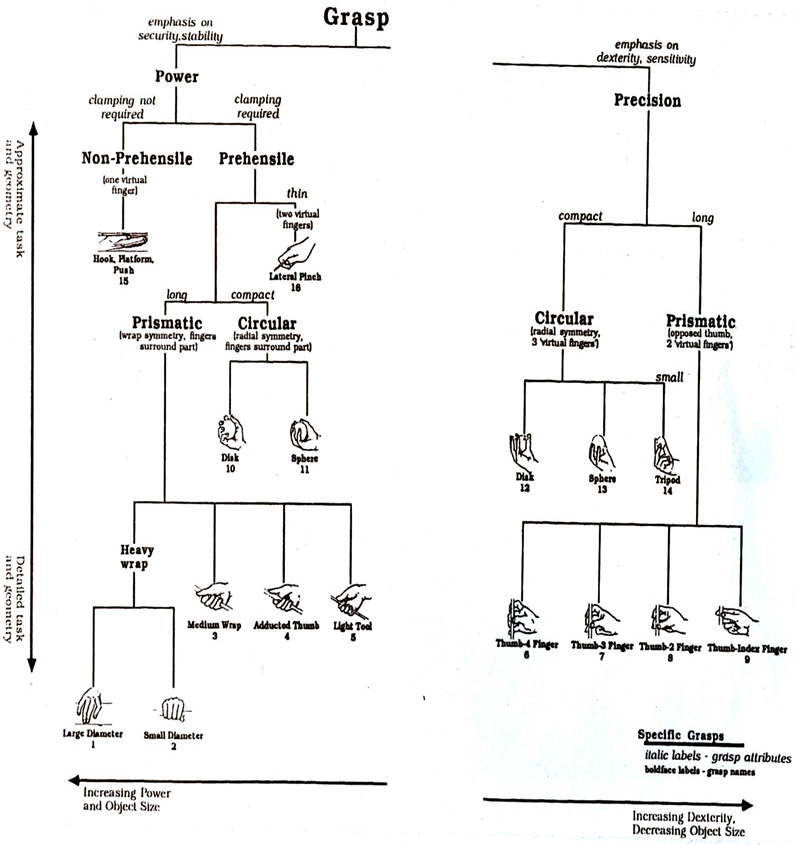
The Importance of Adaptation
Our hands can adapt to different grasping types to adjust the force and torque needed for manipulation. This adaptation involves using different parts of the hand, such as the pad, palm, and side, to apply forces where necessary.
Grasping in Robotics and Prosthetics
Understanding human grasping patterns has been crucial in the development of advanced robotic hands and prosthetic devices. Engineers and researchers strive to replicate the versatility of human grasping in artificial systems.
Challenges in Robotic Grasping:
- Mimicking the sensory feedback of human skin
- Achieving the dexterity of human fingers
- Balancing precision and power in a single device
Recent advancements in soft robotics and neural interfaces have led to more natural and intuitive prosthetic hands. For instance, the DEKA Arm, approved by the FDA, can perform multiple grasping patterns controlled by the user’s thoughts [4].
Improving Your Grasping Ability
While grasping is largely an innate skill, there are ways to maintain and improve your grasping ability:
- Hand exercises: Regular strength and dexterity exercises can enhance both precision and power grasps
- Varied activities: Engaging in diverse manual tasks helps maintain overall hand function
- Ergonomic tools: Using properly sized and designed tools can prevent strain and improve performance
- Proper technique: Learning correct grasping techniques for specific tasks can increase efficiency and reduce the risk of injury
- Regular breaks: Taking breaks during repetitive tasks helps prevent fatigue and maintains grasping performance
Advancements in Grasping Technology:
Advancements in grasping technology have made it possible for robotic hands to perform more complex tasks. Here are some examples of recent advancements in grasping technology:
Soft Robotics:
Soft robotics involves the use of soft, flexible materials to create robotic hands that can grasp a wide variety of objects. Soft robotics is particularly useful for precision grasp, as it allows for more delicate and precise movements.
Machine Learning:
Machine learning algorithms can be used to train robotic hands to grasp objects more efficiently. By analyzing data from previous grasps, machine learning algorithms can predict the best grasping strategy for a given object.
Tactile Sensing:
Tactile sensing involves the use of sensors to detect the amount of force being applied to an object. Tactile sensing is particularly useful for power grasp, as it allows robotic hands to apply the appropriate amount of force to hold heavy objects.
Tailored Grippers for Robots
Industrial robots often use grippers with two rigid fingers for handling objects. Pressure pads at the fingertip improve friction, but soft materials are a better choice for power grasping. Soft hand deformations and contact patches allow for safer and more delicate object manipulation.
Applications of Robot Soft Hands
Robot soft hands are particularly useful in situations where delicate objects need to be handled. This includes tele-operated surgery, the poultry industry (for handling eggs), and various other scenarios where gentle and adaptable manipulation is required.
Research Focus: Robot Soft Hand for Power Grasping
The future of grasping technology is leaning towards the development of robot soft hands. These soft hands can conform to the shape of objects, improving stability, and requiring less force to manipulate objects. Current research is dedicated to finding the ideal configurations, soft materials, and diameters for robot fingers used in power grasp.
In summary, understanding the different types of grasping, namely precision grasp and power grasp, is essential for various applications, from everyday tasks to advanced robotic technology. These grasping techniques offer versatility and flexibility, allowing us to handle objects with the right balance of dexterity and strength. As technology advances, we can look forward to more developments in the field of robot soft hands, making delicate object manipulation safer and more efficient.
Advancements in Robot Gripper Technology
The development of robot grippers has come a long way in recent years, with researchers focusing on creating more versatile and sophisticated grasping mechanisms.
FAQs:
What is the difference between power grasp and precision grasp?
Power grasp involves the use of force to hold an object, while precision grasp involves the use of fine motor skills to handle delicate or small objects.
What are some common human grasping patterns?
Some common human grasping patterns include palmar grasp, lateral grasp, and chuck grasp.
What is soft robotics?
Soft robotics involves the use of flexible materials to create robotic hands that can mimic the softness and compliance of human hands.
Why is understanding grasp is important in robotics?
Understanding grasping is essential in robotics as it allows for the development of robotic hands that can mimic human grasping patterns and adapt to different objects and grasping scenarios.
What is the future of robotic hands?
With continued research and development, we can look forward to seeing even more advanced robotic hands in the future, with the ability to mimic human grasping patterns and adapt to different objects and scenarios.
When does palmar grasp develop in infants?
Palmar grasp is the first type of grasping to emerge in infancy.
What are some types of robot grippers?
Some types of robot grippers include hydraulic grippers, pneumatic grippers, electric grippers, and soft grippers.
Why is the study of grasp is important?
The study of grasping is important for understanding human motor skills, robot hand research, and grasping technology.
Conclusion
The human hand’s ability to perform both precision and power grasps is a testament to its remarkable versatility. Understanding these grasping types not only helps us appreciate the complexity of our daily manual activities but also informs the design of tools, workspaces, and assistive devices. As we continue to push the boundaries of technology and human performance, the study of grasping remains a crucial field with implications for medicine, robotics, and ergonomics.
By honing our grasping skills and being mindful of how we use our hands, we can enhance our ability to interact with the world around us, from the most delicate tasks to the most demanding physical challenges.


